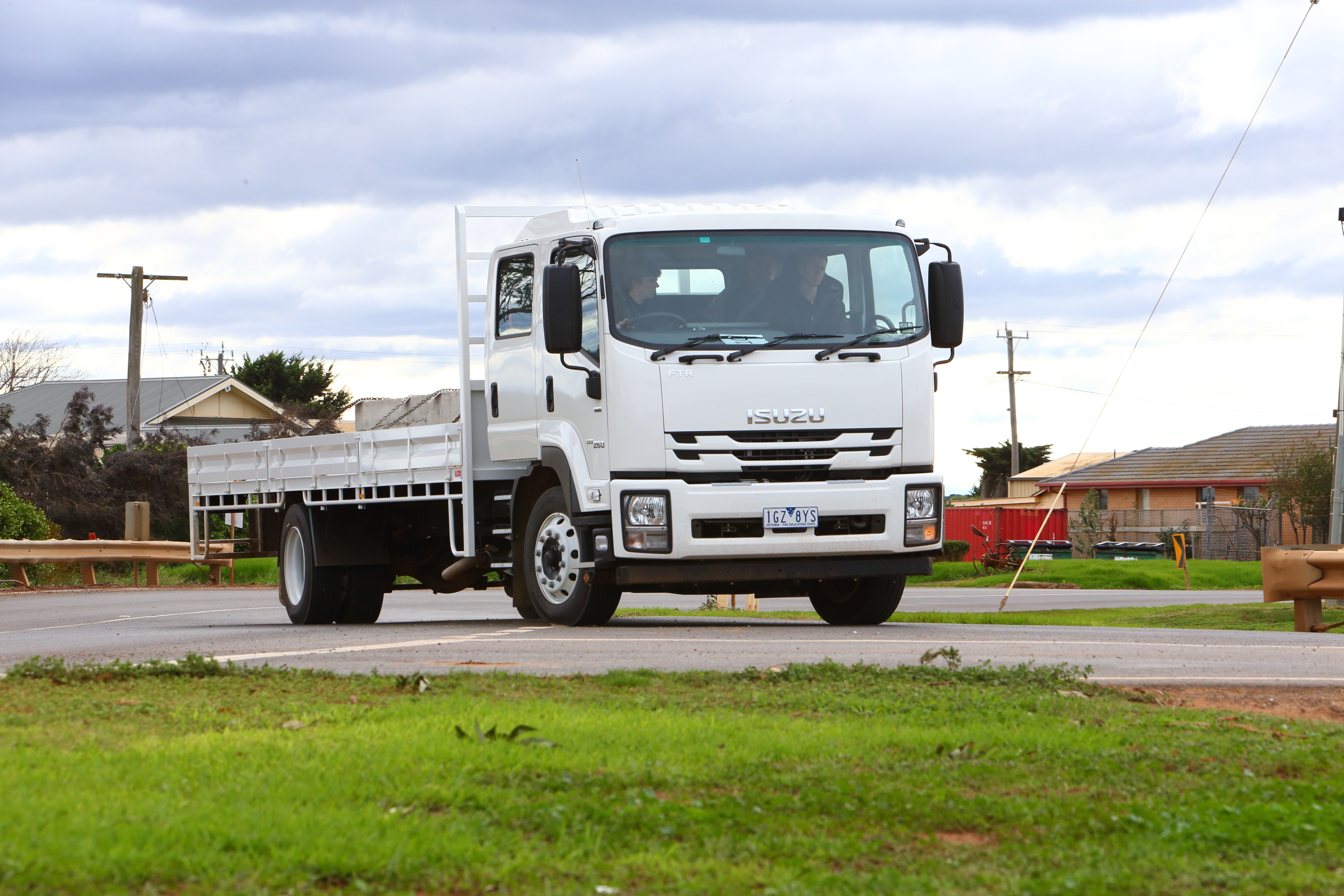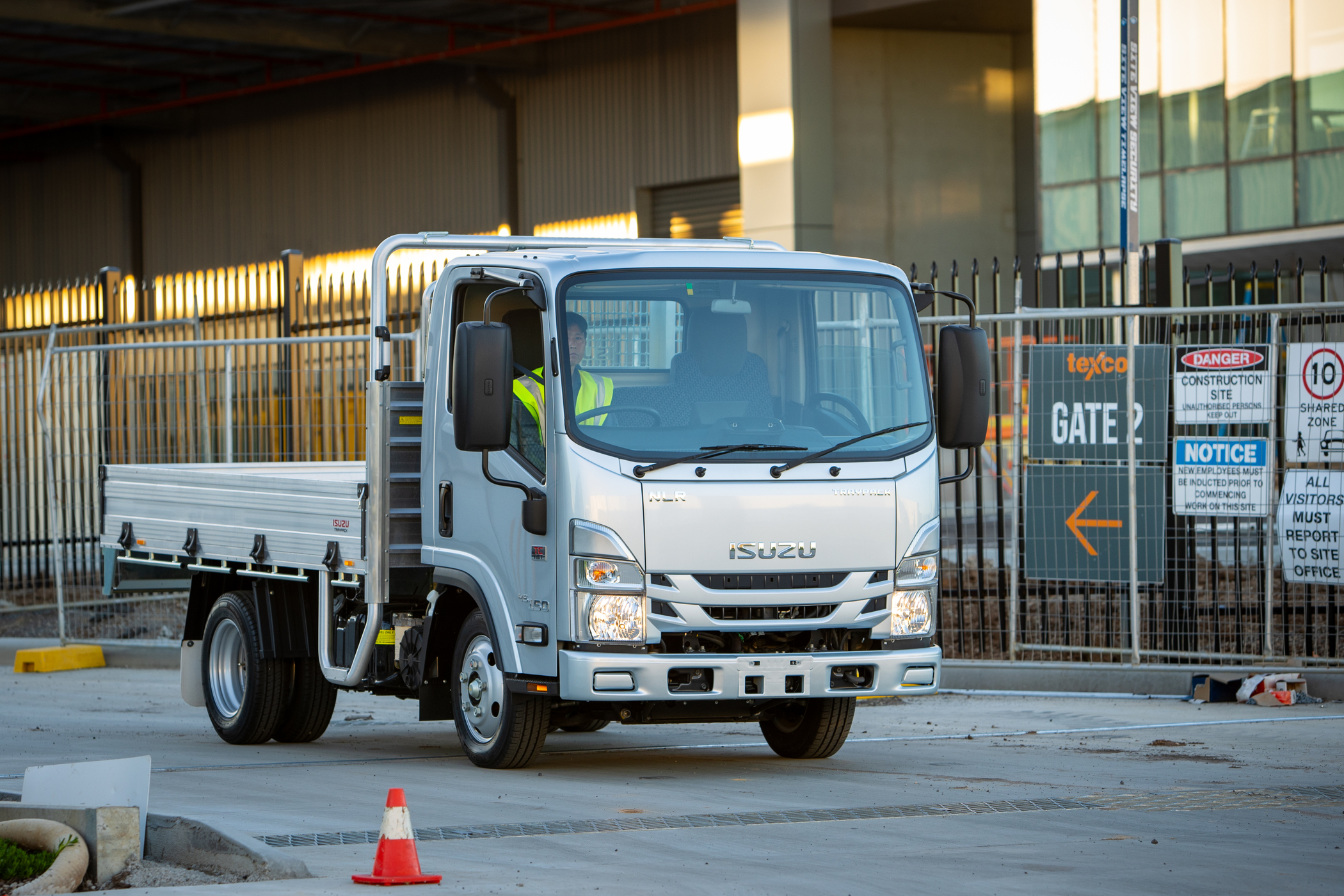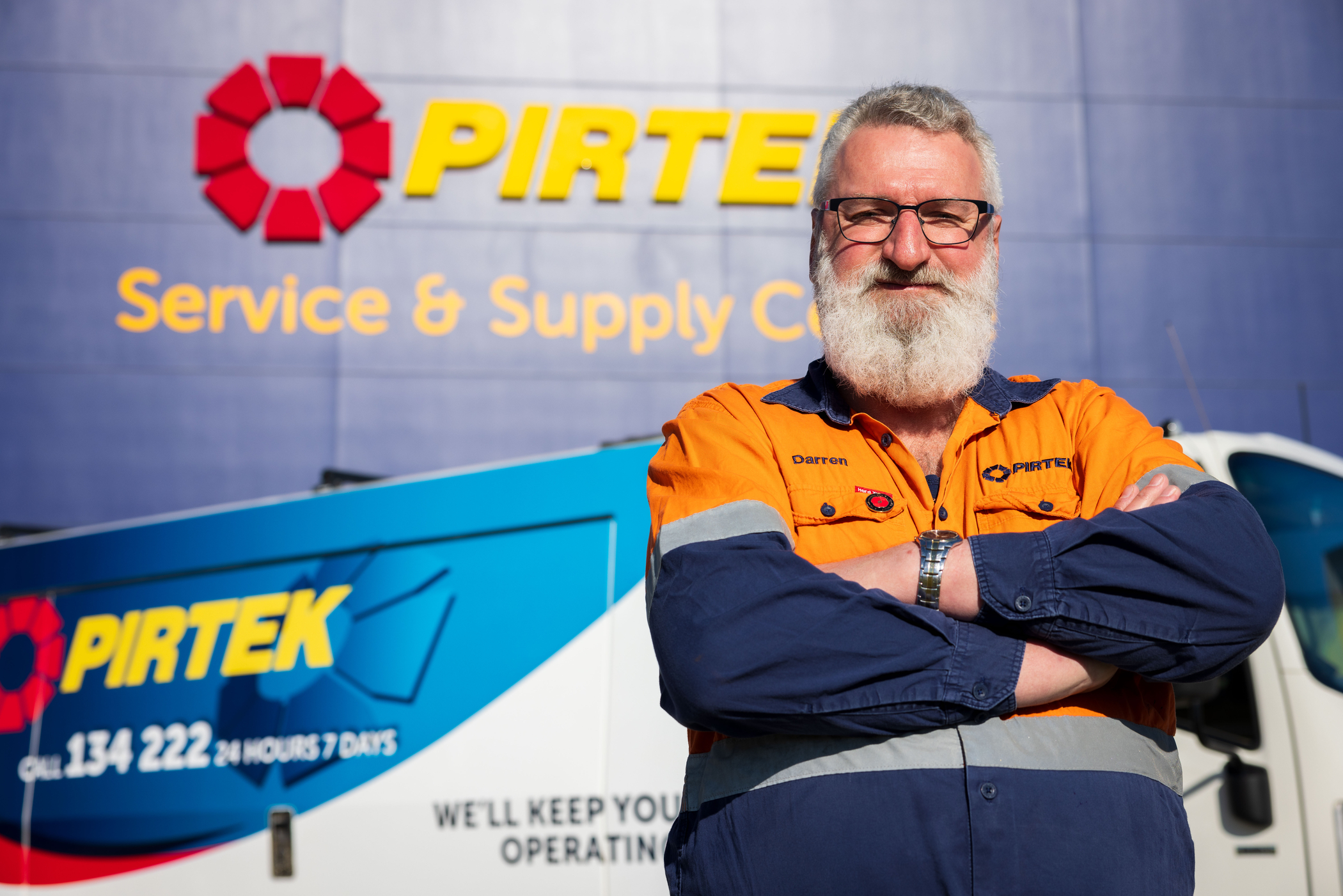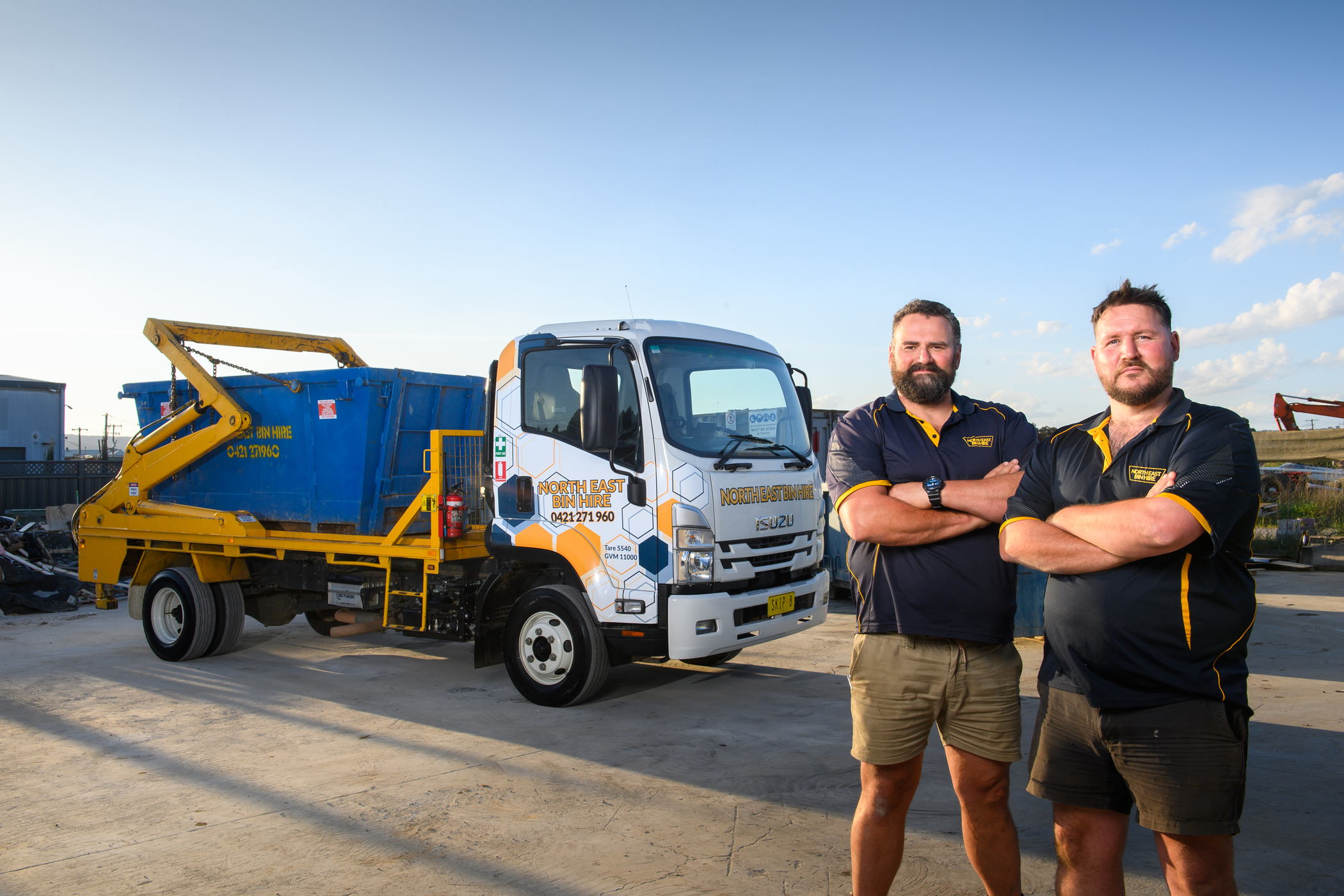THE MAIN EVENT

Dave Whyte
PowerTorque January, 2017
They may not have the glamour and bling of long haul interstaters, but the medium truck segment carries the country just as much – Report by Dave Whyte
The medium-duty segment of the Australian truck market is the biggest performing sales sector, and has been for many years. While we give big exposure to the heavy-duty end of the market, the sales figures of medium-duty trucks far outweigh those for heavy-duty trucks, and the reason for this is the amount of freight moved over short distances, where medium-weight trucks are more practical. The local PUD task is growing by the day; and while B-doubles are right at home on the highway, they are not so useful for door to door deliveries around town. With so much of the freight task being carried out by these mid-weight contenders, it’s no surprise the competition between manufacturers is fierce.
To keep ahead of their competitors, manufacturers are constantly updating and evolving their offerings. This has seen a huge improvement in the levels of safety, comfort and efficiency offered by all manufacturers over the last five to ten years, and has taken these smaller trucks from being a basic workhorse to having all the latest technology on board. The latest offering from Isuzu continues this trend, and includes the introduction of new driveline technology to deliver improvements in efficiency and ease of operation. Emissions treatment has also come in for some attention on certain engines, with the promise of increased reliability and reduced maintenance on emission control hardware.
The biggest news to come out of the new F Series is the introduction of a 5.2 l, four-cylinder engine. While a smaller power plant might not seem like a good idea, it is the current trend among most manufacturers these days, with a lot of focus now being on building more compact engines with higher power output. The new Isuzu 4HK1 engine uses two-stage turbo charging technology, and is available in two power ratings, 210 hp (154 kW)/726 Nm or 240 hp (177 kW)/765 Nm.
The 4HK1 meets Euro 6 emissions standards in either power rating, using a Diesel Particulate Filter (DPF). It also features idle stop/start technology, which cuts the engine off at a standstill – sitting at the traffic lights for example. For those who spend their days in stop-start traffic, this could have a significant effect on fuel consumption. For those looking for a bit more power, the F series is also available with the six-cylinder 6HK1 engine which delivers up to 300 hp (221 kW) and 981 Nm of torque. This engine utilises a Diesel Oxidation Catalyst (DOC) to control emissions, and so doesn’t require either a DPF or SCR. This means no regeneration ‘burn offs’ or excessive AdBlue usage, and so it is perfectly suited to vocational roles where high idle or PTO time is experienced. Also new on the options list for the F series is the TC AMT which uses a the well proven Isuzu AMT, but replaces the clutch with a torque converter to provide better performance when moving off from a standstill, and improved driveability at low speeds.
This transmission is available behind the 4HK1 in various models ranging from 10.7 t up to 14 t, and carries no weight penalty over the previous automated clutch version. An Allison Automatic transmission is also available on many models as a tried and tested alternative. To find out just what the new F series had to offer, PT was invited to drive some of the new models around the outskirts of Brisbane. With nine different models available to drive, covering varying GVM ratings and driveline options, it was a great way to directly compare the characteristics of the four and six-cylinder engines, and experience the difference the torque converter made to the AMT models. Covering such a broad range of applications and abilities, it was interesting to see that none of the nine vehicles available was fitted with a clutch pedal.
The vast range of automatic or automated trucks available on the market is a direct reflection of the demand from customers for easy to operate and efficient equipment, and Isuzu buyers are no different. In fact, they’re spoilt for choice. The early part of the day saw me driving those trucks with the bigger 6HK1 six-cylinder engine and Allison Automatic transmission fitted. With each of these trucks loaded to 80% of their max GVM (as were all the trucks on the day), the power of the six-cylinder engine was more than adequate. Allison Automatic transmissions have had a huge resurgence in later years and, having driven various trucks with them fitted, it’s easy to understand why. The smooth acceleration, and almost seamless gear changes combine to provide a surreal driving experience, with virtually no break in driveline torque.
This is especially important when climbing hills, as the quick gear changes mean very little speed is lost between gears. All this smoothness also translates to reduced wear on driveline components, including tyres. The afternoon’s driving provided the most interest though, with the new four-cylinder engine providing some very valuable results. While the power output may be a little down on the six-pot engine, the driving experience didn’t portray the difference in any big way. This little engine seems to box well above its weight, with plenty of torque low down in the rev range and good driveability in all conditions encountered. Noise levels were low and, with the TC AMT slotted in behind, it took the afternoon traffic in its stride.
Having a torque converter fitted made for very good progress off the line, though the AMT is a little slower in the gear change than a full automatic. I think this will prove to be a very popular combination, with the ease of the AMT and the fuel consumption benefits of the smaller engine combining to make for an easy drive that should be easy on the pocket. Along with a few minor cosmetic changes outside the cab, there have also been some changes made inside.
Seating has come in for some attention, with the driver getting a fully adjustable ISRI seat on all models. Interestingly, the passenger also gets a suspended seat in the crew-cab variants, with the rear seat also being greatly improved over previous offerings to keep passengers comfortable. A new steering wheel, with height and reach adjustment, also helps to maintain the more modern feel in the cab. Strangely though, there are no steering wheel mounted controls for the radio-sat/nav unit. Isuzu has been spruiking the virtues of this system for some time now and, in designing a new steering wheel, ought to have taken this into account.
Whatever driveline combination you go with, the new F series offers a pleasant and relaxed driving experience. Interior noise levels are low, and with a good load on board the ride quality is very good, especially in the 8-wheeler FYJ model. I’ve said it before, and I’ll say it again, Japanese trucks are not the basic, round town buzz boxes they used to be.
Whether it be driven by the sales competition, or simply a natural progression, the medium-duty segment is the area of the market where we have seen the biggest leap in terms of comfort and performance. With the new F series, Isuzu has continued the trend. The full article can be found at www.powertorque.com.au


Playtime’s over, get $3,500* to spend on extras.
If you’re ready to get serious about tackling bigger jobs, grab yourself an NLR 45-150 AMT SWB Traypack from the Ready-to-Work range for $62,990 drive away*. And to prove we aren’t playing, buy any NLR Traypack before June 30 and you’ll get $3,500* to spend on genuine accessories or an Essentials service agreement.
Learn more



